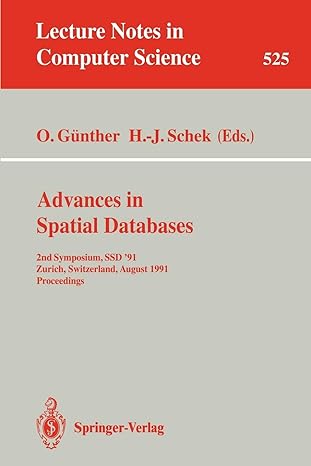Question
A matroid (E, I) is a set E of ground elements together with a collection I of subsets of E; that is, if S I,
A matroid (E, I) is a set E of ground elements together with a collection I of subsets of E; that is, if S I, then S E. A set S I is said to be independent. The independent sets of a matroid obey the following two axioms: If S is independent, then any S 0 S is also independent. If S and T are independent, and |S| < |T|, then there is some e T S such that S {e} is also independent. An independent set S is a base of the matroid if no set strictly containing it is also independent. (a) Given an undirected graph G = (V, E), show that the forests of G form a matroid; that is, show that if E is the ground set, and I the set of forests of G, then the matroid axioms are obeyed. (b) Show that for any matroid, every base of the matroid has the same number of ground elements. (c) For any given matroid, suppose that for each e E, we have a nonnegative weight we 0. Give a greedy algorithm for the problem of finding a maximum-weight base of a matroid.
Step by Step Solution
There are 3 Steps involved in it
Step: 1

Get Instant Access to Expert-Tailored Solutions
See step-by-step solutions with expert insights and AI powered tools for academic success
Step: 2

Step: 3

Ace Your Homework with AI
Get the answers you need in no time with our AI-driven, step-by-step assistance
Get Started


